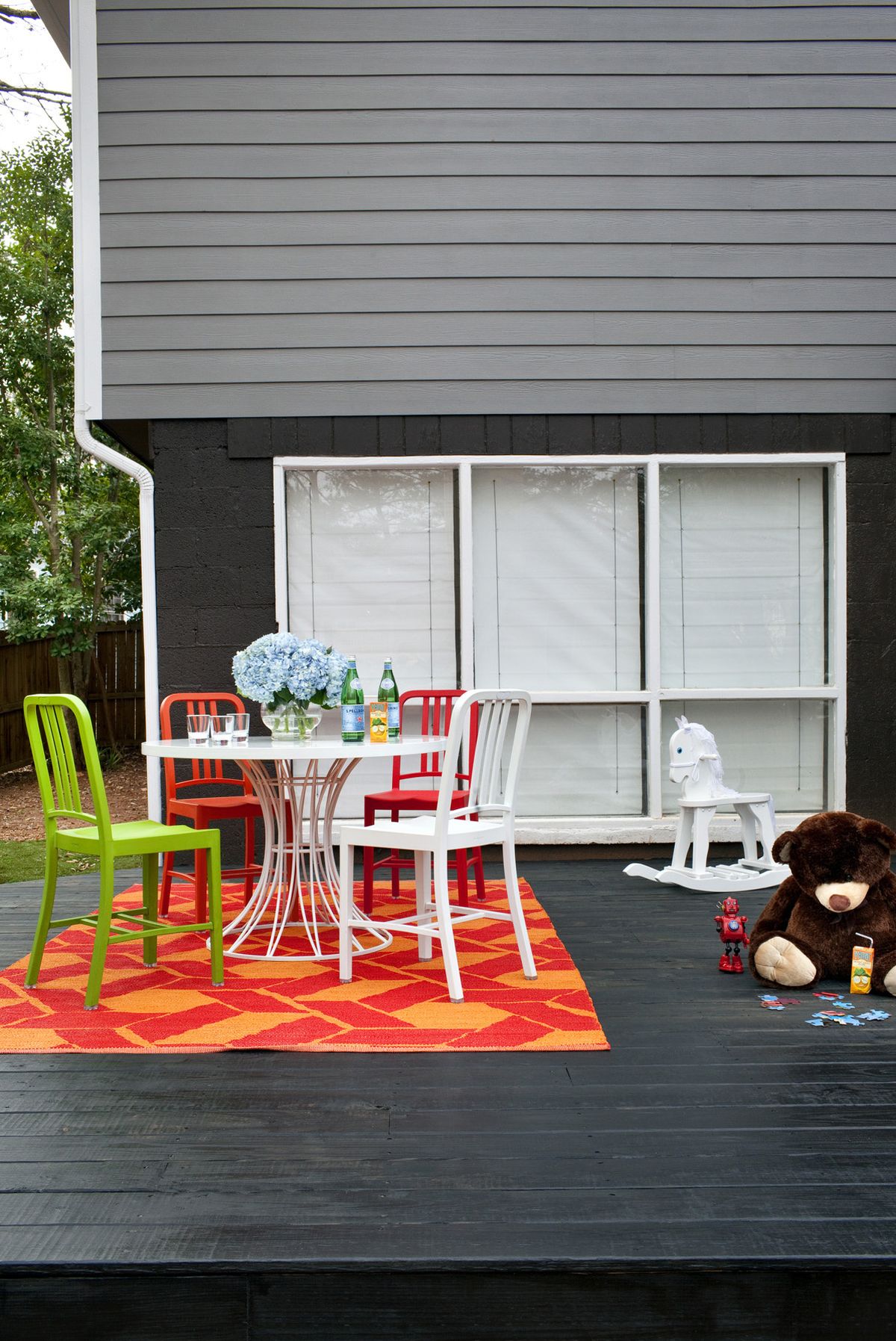After long winter, it’s time to spruce up indoor/outdoor spaces

It’s been a long, hard winter in much of the country: towering snowdrifts, icy roads, freak hailstorms.
For many of us, spring can’t come fast enough, and with it the chance to enjoy our porches, patios and sunrooms.
Options abound for making these indoor/outdoor spaces look stylish. But can we have all that gorgeous style while using durable, easy-to-care-for items that will stay looking good all season?
The experts say yes – if you choose carefully.
“When it comes to materials, now more than ever the gap has been bridged between indoor and outdoor,” says designer and decordemon.com founder Brian Patrick Flynn.
“There are a ton of pieces that look fit for your actual living room, but they’re meant to be outdoors. A lot of people are beginning to find that perfect outdoor sofa and bring it into their sunroom.”
Flynn and two other experts – Los Angeles-based interior designer Betsy Burnham, and decorator and design blogger Nick Olsen – offer advice on creating beautiful sunrooms and porches that you can enjoy effortlessly.
The right fabrics
Outdoor fabrics have come a long way since the plastic-coated 1970s. These designers all praise Sunbrella and other high-end outdoor fabric companies for their wide selection of colors, styles and textures.
“But,” warns Olsen, “really good outdoor fabrics don’t come cheap.”
He recommends buying a basic indoor sofa at a reasonable price from a retailer like West Elm, then recovering just the seat cushions and a few throw pillows in a pricey outdoor fabric. This will cost notably less than upholstering all of your sunroom furniture in high-end outdoor textiles.
Flynn also suggests hanging drapes “to soften the feel of a room that’s on the exterior of your house,” and to add a dash of color and pattern.
“Sunrooms usually have so many windows, so much glass,” he says. “You want to soften the hard edges and take away the feeling of being up against the outside of the house.”
Drapes can be hung at windows or used to cover a less-than-attractive wall.
The oldest objects
Burnham suggests using vintage furniture and accessories that have already withstood the elements to give porches and sunrooms a dose of personality.
“Something that’s been through a lot already is going to be able to put up with even more,” she says.
Search flea markets for items made of worn wood and metal. If they become further scuffed, it only adds to the beauty.
If you prefer a fresh sheen on vintage items, metal pieces such as old wrought-iron furniture can be sprayed with automotive paint at an auto-body shop. This creates a glossy, colorful surface impervious to the elements.
“It’s an excellent way to take something that might be 50 or 60 years old,” says Flynn, “and make it look showroom new.”
Another option: Burnham sometimes repurposes cowhides to upholster seats.
They’re high-style, she says, but “can take some abuse. The cows certainly have been out in the rain.”
The easiest floors
Flynn suggests using porch paint on wood or cement floors to bring color and pattern without a rug.
Spill some food or drink? It wipes up easily. And if the painted floor gets worn as the summer wears on, no problem. A faded patina adds to the charm.
Rugs in outdoor fabrics are also an option.
“Thom Felicia has a line you can get on overstock.com right now that’s super-affordable,” Flynn says.
Olsen also visits overstock.com for outdoor rugs, which he says are very durable.
“The dog can chew it up and nothing happens,” he says. “But if worst comes to worst and it’s damaged, you don’t feel guilty, because it was no major investment.”
The sturdiest accessories
Like outdoor fabrics, plastic dinnerware has come a long way in recent years.
Burnham has found chic Suzani-print plates that she calls “fabulous.”
“You’d never imagine they were plastic,” she says.
For durable seating, Burnham says L.L. Bean’s basic rocking chairs have a classic style and are built to last.
For planters, “instead of going crazy with really nice pottery” that can be expensive and fragile, Flynn suggests buying an inexpensive aluminum trash bin (think Oscar the Grouch), remove the label and add casters to the bottom.
Fill the entire thing with used two-liter plastic soda bottles, which weigh very little. Then pour in potting soil, packing it tightly at the top.
“Put in a combination of plants that drape over the side, plants that grow really tall like grasses, mossy things that are short and then flowering things,” Flynn suggests.
“You’re using nature as art, and you’re containing the plants with something used out of context.”
For more fragile accessories, it’s all about location. Olsen says a large, framed mirror brings indoor glamour to any porch, and should be safe if it’s hung properly in an area away from the flow of foot traffic. Ditto for table lamps.
The softest lighting
In the evening, you can raise the style quotient of your porch or sunroom by using warm, flattering light.
“Hanging lighting is a very interesting way to dress up your porch,” Burnham says, “and there are certain kinds of fixtures that you can use safely outside.”
Look for ones that are “wet-rated,” meaning they’re safe even in rain.
And for the simplest, easiest dash of beauty, Flynn says, “you’d be surprised how far those inexpensive paper lanterns will go.”
Hang one over a bare light bulb, he says, and it instantly “adds a beautiful soft glow.”